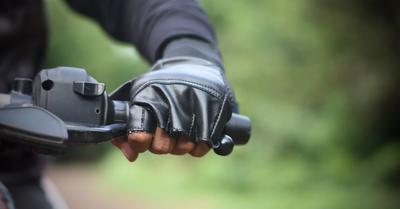Why Is The KTM 390 Considered Unreliable?
The first-generation KTM 390 (2013-2016) suffered from poor engine cooling, stalling, and rough power delivery. Oil and coolant leaks, premature chain and sprocket wear, sporadic corrosion, and TFT dash issues helped spread a reputation for unreliability in early 390 Duke and RC models.
While the ‘unreliable’ stigma attached to the KTM 390 is mainly unfair, it’s not without substance and has much to do with how initially, the Duke and RC 390 derivatives were built and marketed.
Four forces compromise the reliability of the KTM 390:
- Emissions compliance
- Production budget
- Quality control
- Rider competence
Does a Cat Affect KTM 390 Reliability?
To produce an affordable, low emissions street racer, KTM and its Indian production partner, Bajaj Auto, have to limit the electronic fuelling and exhaust parameters on the KTM 390. The lean fuel mixture runs hot in the high-compression 390 engine, delivering snatchy throttle response at low revs.
- The fitment of a catalytic converter (cat) to the exhaust pipe increases backpressure, adding heat to the engine.
Having to comply with increasingly stringent emissions standards without any loss in engine performance is tricky enough. The imperative to offer a street racer at an affordable price, and the potential for unreliability in the KTM 390 increases.
Is the KTM 390 Made with Budget Parts?
By manufacturing the KTM 390 derivatives in India, KTM can minimize its production costs via the procurement of cheaper parts and labor. KTM and Bajaj have focused on improving the build quality of the Duke and RC 390s, effectively eliminating the reliability problems of the earlier models.
While certain parts and consumables on the KTM 390 production line may be less than premium quality, the finished product offers excellent value for money and reliability.
Aftermarket replacement parts, including radiator fans and hoses, seals, chains, sprockets, piggyback ECUs, cat eliminators, performance exhausts, filters and lubricants, improve overall reliability in early KTM 390s.
Is The KTM 390 a Beginner’s Bike?
Another reason for the ‘unreliable’ tag attached to the KTM 390 may be due to the OEM marketing it as a beginner bike. Could this be an advertising oversight? A 373cc motorcycle that hits 60mph in 5.5 seconds is not for rookies. The KTM 390 needs a skilled rider to keep it running reliably.
- Put a novice rider on a 390 Duke in an urban environment and that engine, with the highest compression ratio in its class, will overheat and die!
The upshot is the KTM 390’s reputation for being unreliable may be partly caused by the fact that it’s not being used properly, or maintained correctly, by riders who don’t have sufficient hours in the saddle (or the garage) under their belts.
What Mods Improve KTM 390 Reliability?
Premium aftermarket motorcycle products address the common reliability problems facing pre-2021 KTM 390 models via cooling system enhancements, exhaust backpressure reduction, fuel injection remapping, chain, sprocket, and brake rotor upgrades, TFT protection, and fork seal protection.
Most of these modifications are relatively easy to execute for someone with basic motorcycle servicing skills. The electronic upgrades look daunting, but with the necessary due diligence to ensure compatibility between the ECU and aftermarket parts, there shouldn’t be any ill effects from a DIY electronics modification to your 390 Duke or RC 390.
What are the Best Mods to Prevent a KTM 390 Overheating?
The easiest and cheapest way to improve the KTM 390’s cooling system is to use high boiling-point coolant and a high-pressure radiator cap. A larger radiator fan, racing oil and air filter, a de-cat pipe, and a piggyback ECU will all help to reduce engine heat and improve reliability.
Bear in mind that any aftermarket fitments to your KTM 390 may void the bike’s warranty.
Removing the catalytic converter and replacing it with a de-cat pipe may be illegal, so check your local DOT ordinances to avoid penalties.
Other reliability issues on the KTM 390 are due to premature wear of specific components, including brake rotors, sprockets, chains, and fork seals.
Our shopping list below will lead you to the best KTM 390 parts replacement products.
A Buyer’s Guide for the Best Aftermarket KTM 390 Reliability Mods
Begin your quest for a cool-running Duke or RC with Engine Ice Performance Coolant and a 23psi Helix Racing Radiator Cap.
Install a 4” SPAL radiator fan for improved airflow into the KTM 390 radiator fins.
You may fancy this premium SAMCO Radiator Hose Kit for extra protection.
Motul 300V Synthetic Oil is the go-to for hardcore KTM 390 riders whether you keep your cat or remove it.
A Performance K&N Air Filter will help your 390 engine breathe better, cool better, and perform more reliably.
If it’s a de-cat mod you’re after, use the Leo Vince Cat Eliminating Mid-Pipe.
To harmonize the array of mods with the KTM 390 fuel and ignition factory ECU settings, you’ll need a piggyback ECU like the Dynojet Power Commander V.
With the Power Commander V, you can safely replace the stock muffler with a slip-on Performance Exhaust from Leo Vince.
For better braking, get a Galfer Wave Front Rotor.
Get SKF Fork Seals here.
For a longer-lasting chain, get the D.I.D. Gold Performance Chain.
A durable Rear Sprocket is essential.
Preserve your KTM 390 TFT Dash Screen Protector.
The beauty of a mod job well done is your KTM 390 will have improved power and torque delivery through the rev range. With remapped fueling, your engine will have better cooling and smoother throttle response, effectively eliminating the two main reliability problems, overheating and a snatchy throttle!















